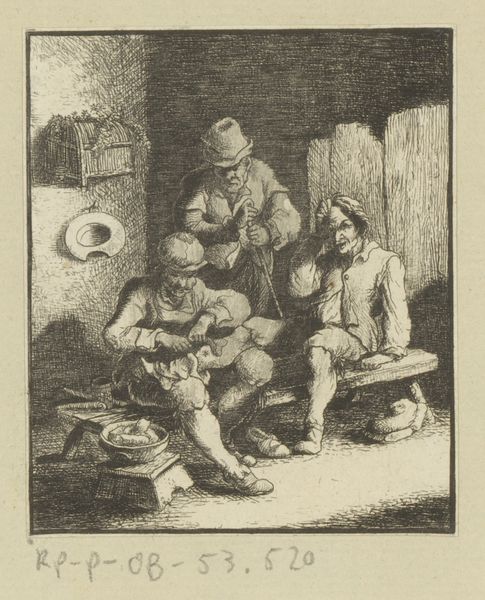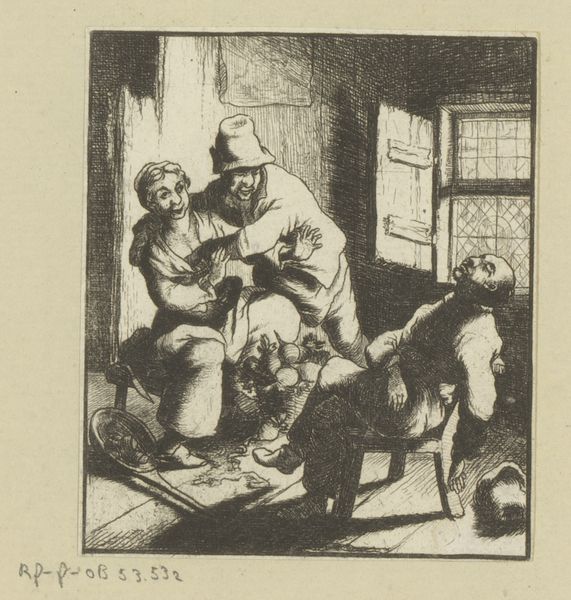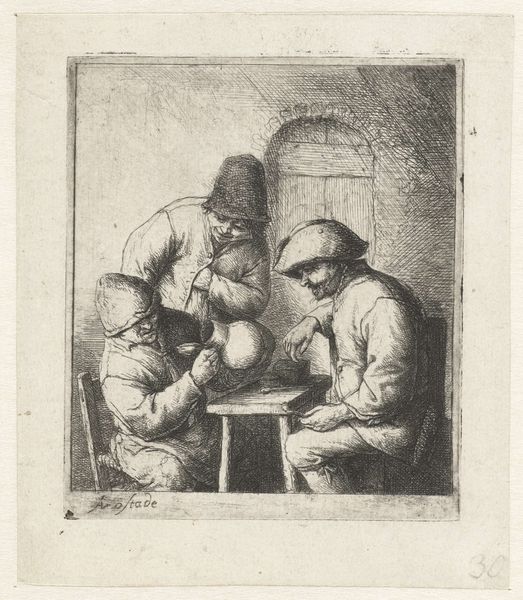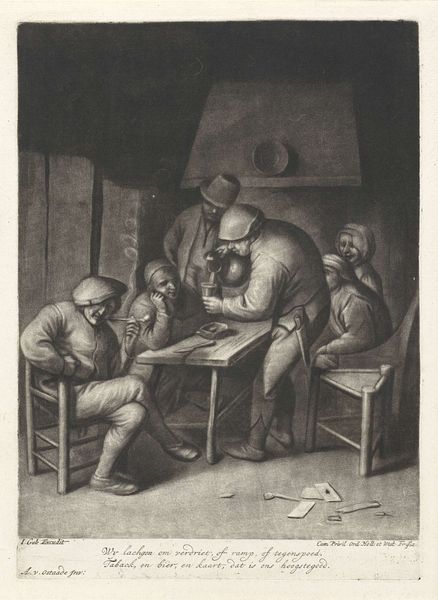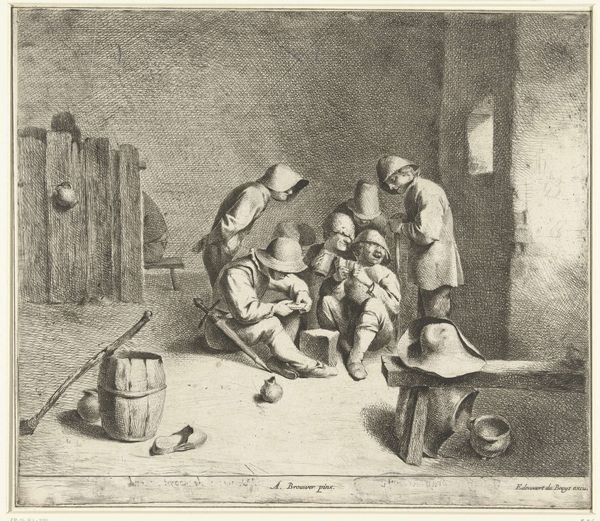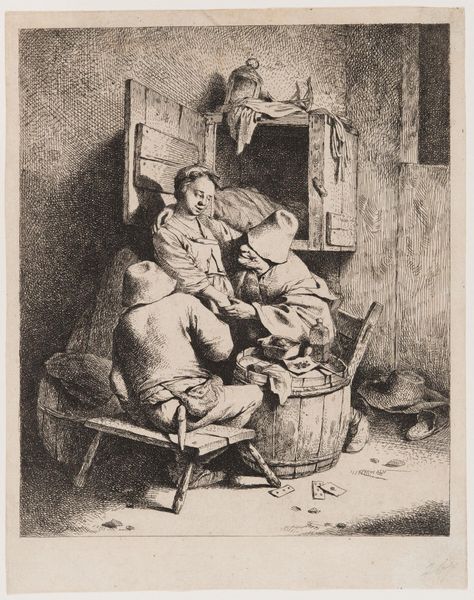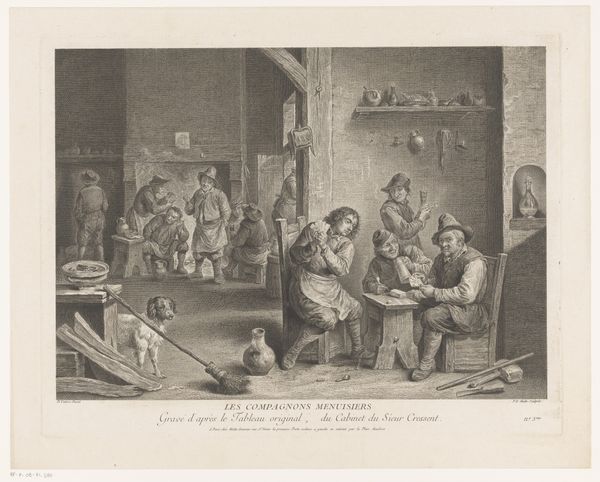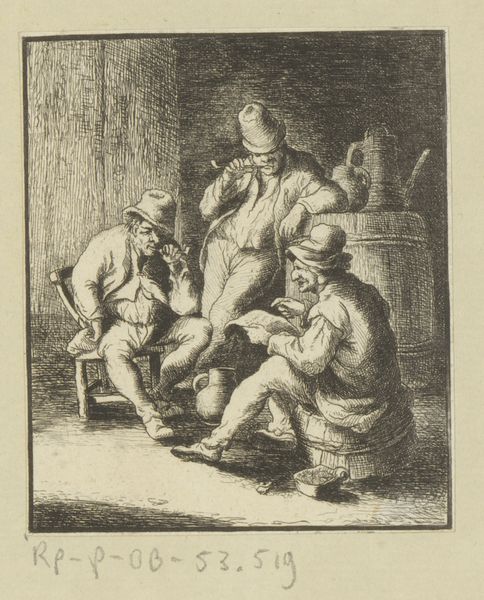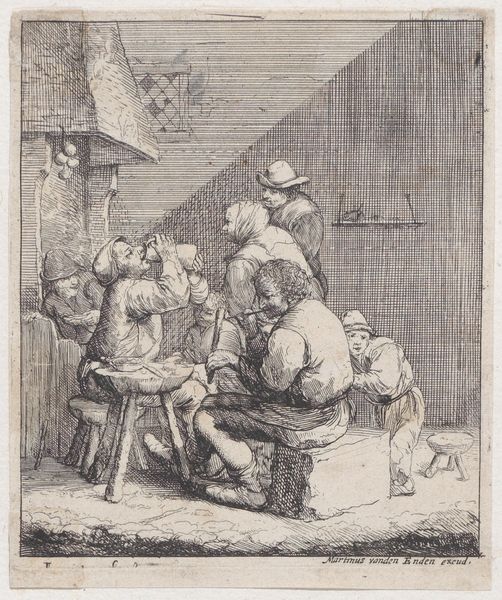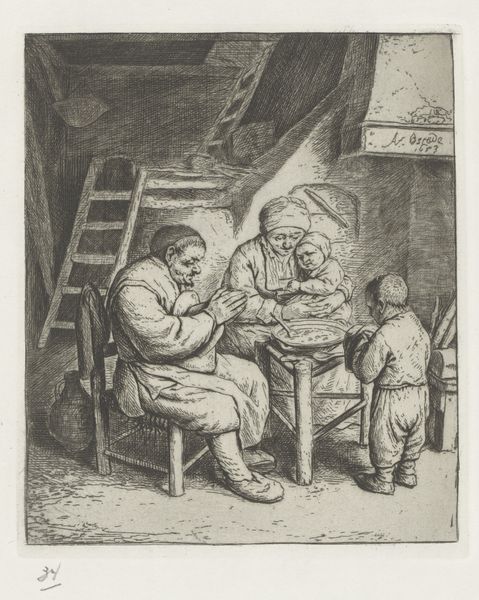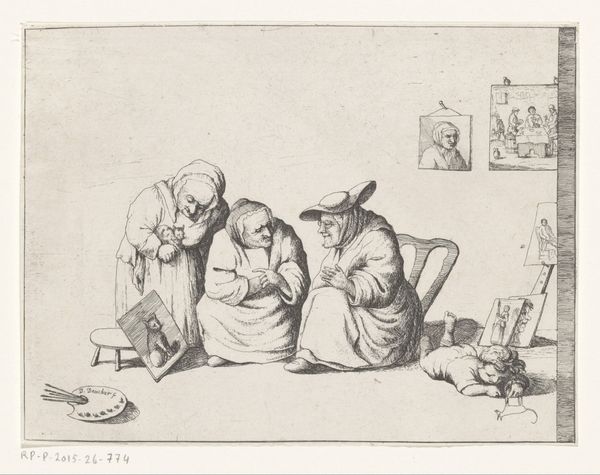
print, engraving
#
portrait
#
dutch-golden-age
# print
#
figuration
#
genre-painting
#
engraving
Dimensions: height 178 mm, width 199 mm
Copyright: Rijks Museum: Open Domain
Editor: This engraving, "Schilder in atelier" or "Painter in the studio," by Jan Matham, dated between 1628 and 1648, depicts a scene inside an artist's workspace. The lines are so fine and intricate; you can almost feel the artist's hand. What draws your eye in this composition? Curator: What interests me is Matham’s depiction of artistic labor itself. Engravings like this weren’t just about depicting a scene, but about reproducing and circulating images widely. Consider the labor involved: Matham, the engraver, interpreting another artist’s vision, making it available to a broader public, even the labor of the printing press itself. Editor: So you see the physical creation of art – both painting and engraving – as key? Curator: Precisely! This wasn't just about Matham's artistic talent, but the social network required to produce and distribute such a work. Who was consuming these prints, and what value did they hold for them? We see the depiction of other artisans at work – one grinding pigment for the painter. Their presence reminds us that artmaking, even in the Dutch Golden Age, relied upon multiple makers, each contributing to the final product we now hold up as high art. What is being erased from this artistic story? Editor: So you are questioning the idea of the solitary genius artist. Curator: Exactly! What materials are accessible and being used? Also, the text inscribed on the print adds another layer, linking language, labor, and artistic creation, which is so intriguing, isn't it? Editor: It's fascinating to think about art in terms of all the labor involved, rather than just the finished product. Curator: Thinking materially challenges that singular authorship that’s commonly prized. It makes us aware of all those hidden makers whose effort also produced beauty.
Comments
No comments
Be the first to comment and join the conversation on the ultimate creative platform.

